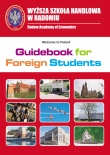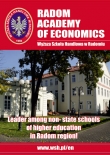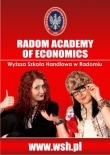 Practical information
Practical information Language
English, German and Russian are among the better known foreign languages spoken in Poland, especially in the larger urban centers. English is particularly popular among the younger generation, but remember that most ordinary Poles don’t speak well any other language than Polish. Most tourist facilities employ at least one English speaker. But to make your visit to Poland even more rewarding we would encourage you to learn some basic Polish words. Ideally, everyone who wants to travel in Poland should know some basic Polish - the more you know the more you can understand and the easier your travel is likely to be. We offer you a small English-Polish dictionary, with the most important words and phrases, it might be helpful.

USEFUL INFORMATION
The pronunciation of all the letters is as follows:
A = A as in fatherą = Nasal as the ON in the French BONB = Same as English, except a final B is unvoiced (sounds like P)C = as English TS (even when it begins a word)ć = soft English CH soundD = Same as English (final unvoiced D sounds like T)E = as in petę = Nasal, almost like EN in TEN, but, same as e in pet when it is the final letter of a wordF = same as EnglishG = Always a hard G as in get (final G is unvoiced as K)H = Same as EnglishI = as the I in machineJ = as English Y as in yellowK = as in EnglishL = as in Englishł = as English WM = as in EnglishN = as in Englishń = as Spanish N/tilde as in English „NI” in onionO = as the O in the English word FOR. NEVER pronounced „OH” as in Ohioó = as the oo in English FOOT, NOT as as the oo in English BOOTP = as in EnglishQ = There is no Q in the Polish alphabet!R = Roll your R’s like Spanish or ScottishS = as English soft SSSS, never as Zś = soft sh soundT = as in EnglishU = same as O/acute, as the oo in English FOOT, NOT as as the oo in English BOOTV = No V in the Polish alphabet!W = as English V (final V is unvoiced as F)X = No X! Only found in foreign wordsY = Always used as a vowel, sounds like the i in IT. NEVER as „eeeee”, NOT even at the end of a word.Z = as in Englishź = z with accute accent) soft zh like Zhivagoż = (z with a dot over it) harder zh sound
Now we come to the combinations and dipthongs:
CH = Same as H in EnglishCZ = Hard CH sound as in CHURCHDZ = as in English „reD Zone”, but....DZ followed by an I is pronounced as J in „Jeep”, that’s why „Dziękuję” is pronounced „JEN koo yeh”RZ = Same hard zh as Z/dot (do not pronounce the R)(final RZ is unvoiced as SH)SZ = Hard SH soundSZCZ = combination of both as the SHCH in „Fresh cheese”
|
ENGLISH EXPRESSION |
POLISH TRANSLATION |
SOUNDS LIKE |
|
HELLO/BYE EXPRESSIONS |
||
|
Welcome/Hello |
Witaj |
[ v’eet’ay] |
|
Hi |
Cześć |
[ch’eshch] |
|
Good morning/afternoon |
Dzień dobry |
[j’eny d’obri(h)] |
|
Good evening |
Dobry wieczór |
[d’obri(h) v’ee’ech’oor] |
|
Goodbye/Bye |
Do widzenia |
[do vidzenia] |
|
Good night |
Dobranoc |
[dobrahnots] |
|
See you later |
Do zobaczenia |
[d’o z’ob’ach’eny’a] |
|
NUMBERS |
||
|
one |
jeden |
[y’ed’en] |
|
two |
dwa |
[dv’a] |
|
three |
trzy |
[tshi(h)] |
|
four |
cztery |
[cht’eri(h)] |
|
five |
pięć |
[p’ee’ew(n)ch] |
|
six |
sześć |
[sh’eshch] |
|
seven |
siedem |
[sh’ed’em] |
|
eight |
osiem |
[‘osh’em] |
|
nine |
dziewięć |
[j’ev’ee’ew(n)ch] |
|
ten |
dziesięć |
[j’esh’ew(n)ch] |
|
DAYS |
||
|
Monday |
poniedziałek |
[p’ony’ej’aw’ek] |
|
Tuesday |
wtorek |
[ ft’or’ek] |
|
Wednesday |
środa |
[shr’od’a] |
|
Thursday |
czwartek |
[chv’art’ek] |
|
Friday |
piątek |
[p’eeo(n)t’ek] |
|
Saturday |
sobota |
[s’ob’ot’a] |
|
Sunday |
niedziela |
[ny’ej’el’a] |
|
SMALL TALKS |
||
|
How are you? |
Jak się masz? |
[y’ak sh’ew(n) m’ash] |
|
I’m fine, and you? |
OK, a ty? |
[ok, ‘a ti(h)] |
|
I don’t feel good |
Źle się czuję |
[j(e)l’e sh’ew(n) ch’ooy’ew(n)] |
|
What’s your name? |
Jak masz na imię? |
[y’ak m’ash n’a ‘eem’ee’ew(n)] |
|
My name is… |
Nazywam się… |
[ n’azi(h)v’am sh’ew(n)] |
|
Who is it? |
Kto to? |
[kt’o t’o] |
|
What is it? |
Co to? |
[ts’o t’o] |
|
It’s… |
To jest… |
[t’o y’est] |
|
Do you speak English? |
Mówisz po angielsku? |
[m’oov’eesh p’o ‘ang’ee’elsk’oo] |
|
Just a little |
Trochę |
[tr’oh’ew(n)] |
|
I don’t understand |
Nie rozumiem |
[ny’e r’oz’oom’ee’em] |
|
Repeat, please? |
Powtórz, proszę |
[p’oft’ooj(e) pr’osh’ew(n)] |
|
It’s nice to meet you |
Miło mi |
[m’eew’o m’ee] |
|
Yes |
Tak |
[t’ak] |
|
No |
Nie |
[n’ye] |
|
That’s all right |
W porządku |
[f p’oj(e)o(n)dk’oo] |
|
I understand |
Rozumiem |
[r’oz’oom’ee’em] |
|
MAGICAL WORDS |
||
|
Please / here you are / you’re welcome |
Proszę |
[pr’osh’ew(n)] |
|
Sorry/excuse me |
Przepraszam |
[psh’epr’ash’am] |
|
No problem |
Nie ma problemu |
[ny’e m’a pr’obl’em’oo] |
|
Thank you |
Dziękuję |
[j’ew(n)k’ooy’ew(n)] |
|
BASIC QUESTIONS |
||
|
How many? How much? |
Ile? |
[‘eel’e] |
|
How much time does it take? |
Ile to trwa? |
[‘eel’e t’o trv’a] |
|
How much is it? |
Ile to kosztuje? |
[‘eel’e t’o k’osht’ooy’e] |
|
I’m hungry |
Jestem głodny |
[y’est’em gw’odni(h)] |
|
I’m lost |
Zgubiłem się |
[zg’oob’eew’em sh’ew(n)] |
|
I’m sick |
Jestem chory |
[y’est’em h’ori(h)] |
|
I’m tired |
Jestem zmęczony |
[y’est’em zm’ew(n)ch’oni(h)] |
|
I’m thirsty |
Chce mi się pić |
[hts’e m’ee sh’ew(n) p’eech] |
|
Can I have a ticket.. |
Proszę bilet |
[pr’osh’ew(n) b’eel’et] |
|
Where are we? |
Gdzie jesteśmy? |
[gj’e y’est’eshmi(h)] |
|
Is it the right way to…? |
Idę dobrze do..? |
[‘eed’ew(n) d’obj(e)’e d’o] |
|
What’s the time? |
Która godzina? |
[kt’oor’a g’oj’een’a] |
|
It’s (time) |
Jest (time) |
[y’est(time)] |
|
Can you help me? |
Pomożesz mi? |
[p’om’oj(e)’esh m’ee] |
|
I’m looking for.. |
Szukam… |
[sh’ook’am] |
|
I would like to order… |
Chciałbym zamówić... |
[hch’awbi(h)m z’am’oov’eech] |
|
VOCABULARY |
||
|
TRANSPORT |
||
|
ticket |
bilet |
[b’eel’et] |
|
student ticket |
bilet studencki |
[b’eel’et st’ood’entsk’ee] |
|
airport |
lotnisko |
[l’otny’eesk’o] |
|
aeroplane |
samolot |
[s’am’ol’ot] |
|
train |
pociąg |
[p’ocho(n)k] |
|
flight |
lot |
[l’ot] |
|
platform |
peron |
[p’er’on] |
|
bus/coach |
autobus |
[‘a’oot’ob’oos] |
|
car |
samochód |
[s’am’oh’ood] |
|
taxi |
taxi |
[t’aks’’ee] |
|
FINANCE |
||
|
bank account |
konto bankowe |
[k’ont’o b’ank’ov’e] |
|
bill |
rachunek |
[r’ah’oon’ek] |
|
coins |
monety |
[m’on’eti(h)] |
|
credit card |
karta kredytowa |
[k’art’a kr’edi(h)t’ov’a] |
|
currency |
wymiana walut |
[vi(h)m’ee’an’a v’al’oot] |
|
exchange (place) |
kantor |
[k’an’tor] |
|
money |
pieniądze |
[p’ee’enyo(n)dz’e] |
|
tax |
podatek |
[p’od’at’ek] |
|
fee/fare |
opłata |
(‘opw’at’a) |
|
FACILITIES |
||
|
hospital |
szpital |
[shp’eet’al] |
|
office |
biuro |
[b’ee’oor’o] |
|
pharmacy |
apteka |
[‘apt’ek’a] |
|
school |
szkoła |
[shk’ow’a] |
|
shop |
sklep |
[skl’ep] |
|
university |
uniwersytet |
[‘oony’eev’ersi(h)t’et] |
|
INSTITUTIONS |
||
|
bank |
bank |
[b’ank] |
|
embassy |
ambasada |
[‘amb’as’ad’a] |
|
emergency |
pogotowie |
[p’og’ot’ov’ee’e] |
|
fire fighters |
straż pozarna |
[str’aj(e) p’oj(e)’arn’a] |
|
post office |
poczta |
[p’ocht’a] |
|
police |
policja |
[p’ol’eetsy’a] |
|
FOOD |
||
|
bread |
chleb |
[hl’ep] |
|
butter |
masło |
[m’asw’o] |
|
beer |
piwo |
[p’eev’o] |
|
cheese |
ser |
[s’er] |
|
chips |
frytki |
[fri(h)tk’ee] |
|
juice |
sok |
[s’ok] |
|
chicken |
kurczak |
[k’oorch’ak] |
|
pasta/noodles |
makaron |
[m’ak’ar’on] |
|
pork |
wieprzowina |
[v’ee’epsh’ov’een’a] |
|
potatos |
ziemniaki |
[j(e)’emny’ak’ee] |
|
rice |
ryż |
[ri(h)j(e)] |
|
sugar |
cukier |
[ts’ook’ee’er] |
|
water |
woda |
[v’od’a] |
|
wine |
wino |
[v’een’o] |
|
vodka |
wódka |
[v’oodk’a] |
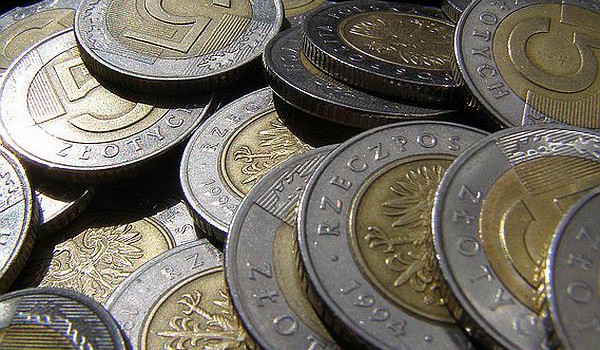
CURRENCY
The national Poland’s currency is called the “ZŁOTY” literally, the gold. Złoty is abbreviated as zł or PLN (1, 2, 5, 10, 20, 50, 100, 200). The smaller unit is called “GROSZ”, 1 zloty = 100 groszes (1, 2, 5, 10, 20, 50 gr). The zloty is converted: to the EURO at 1 EUR = app. 4,2 PLN, to the American DOLAR at 1USD = app. 3,2 PLN.Foreign currencies can be easily exchanged in banks and exchange offices. There are exchange offices in hotels, in all cities, at the airports, the railway stations and many other places.
Most hotels, restaurants, larger shops, travel agencies, airlines and petrol stations accept payments with credit cards. Stickers on the doors and windows usually indicate which credit cards will be accepted for payment. They accept the following cards: Visa, Visa Electron, Eurocard/MasterCard, Maestro, Cirrus. American Express, Diners Club, PolCard can be not accepted. The best card to bring is VISA, because it’s honoured by numerous banks.
MUST SEE PLACES
Piotrówka Settlement
This used to be a well-organised fortified town. It was settled on the slope of the right bank of the marshy valley of the Mleczna river in its narrowest point, at an artifi cially formed hill which is 6- 8 meters tall and cares an area of 1.4 hectares. It was surrounded by earthworks strengthened with wood. In addition, there were two moats; the external was strengthened with wooden box structures fi lled with sand, clay, earth and stones. The second moat, internal, was dry. In the neighbourhood of the settlement there was a castle-castellum. Presumably, since the beginning of the 11th century it was the seat of castellans who used to rule the area on behalf of monarchs. A road lined with wood led to the town from the north. There was a wooden church of St. Peter in the former town, Radom’s oldest temple, built at the turn of the 10th and 11th centuries, which survived up to the beginning of the 19th century. There is a legend connected with the church about the bells whose sound comes from the depths of a nearby pond, and you can hear it on Holy Saturday.
The city walls
The city was surrounded by stone and brick fortifi cations, whose route is marked by the remains which have survived until now. The walls (about 1100 m long, 5-6 m tall, and after additional building works about 9 m tall, from 2.20 to 2.70 m wide) ran along the current Wałowa and Reja Street. There was a moat around the wall fed with water from the southern tributary of the Mleczna River. The wall was strengthened with several low towers which were open from inside and crowned with merlons. The biggest part of the walls have preserved to this day at Wałowa Street. There were three gates leading to the city: Lubelska at the end of Rwańska Street, Piotrkowska at the end of Szpitalna Street, and Iłżecka (Krakowska) at the end of Krakowska Street.
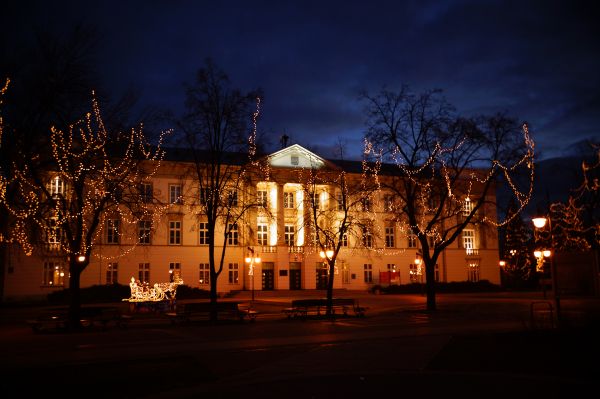
Town Hall
The fi rst town hall in Radom was built around the mid-14th century in King Casimir the Great’s time and located in the central part of the market. In the beginning of the 16th century it was rebuilt in the Renaissance style. In the years 1818-1819 with the decision of the royal governor, General Joseph Zajączek the town hall was demolished. The current town hall building is located on the north side of the market was built in the years 1845-1848 according to a design by Henry Marconi in the neo-Renaissance style. In 1852, on top of the tower (22 m tall) a ‘transparent clock’ was installed which was illuminated with oil wall lamps. Later, the city coat of arms was has been put on the building. After 1919, representatives of local government had their offi ces here, such as Maria Kelles-Krauz from the Nynkowski family, the chairwoman of the City Council, Joseph Grzecznarowski, the president of Radom, Maciej Glogier, the vice-president and senator of the Republic of Poland. In 1924, marshal Józef Piłsudski stayed here. Today, the former town hall, which is considered as one of the most beautiful buildings of its kind in Poland, houses the National Archives.
Gąska’s and Esterka’s Houses
Esterka’s House, 5 Rynek Street, was erected, according to legend, by Casimir the Great for his beloved Esterka. However, studies suggest that the house was built in the second half of the 17th century, to replace the building destroyed by the Swedes. In the fi rst half of the 19th century it belonged to Marianne and Ignatius Gaczkowski, and from 1919 to the Rozenblat family. During World War II occupiers partially demolished the house - only parts of walls at the ground and basement level survived. In the years 1956-1960 the remains of the house were demolished and a new building in the pseudo baroque style was erected designed by architects from Radom SARP’s. There is the Museum of Contemporary Art located in the building with a branch of the Jacek Malczewski Museum. Gaska’s House, 4 Rynek Street, was built by Adam or Stanislaw Gaska, a town councillor and a baker who came from Opoczno, married to Eve Rzedzianowa from Radom in 1594. In July 1656 the Swedish King Karl Gustav was lodged in the house. In the second half of the 18th century there was a pharmacy here whose owner was an Italian man Krystian Valentino. In the years 1818-1819 there were municipal offi ces and then a beer warehouse. In the years 1953-1955 the current design of the facade was made.
1992 it has been the city’s cathedral. It is a basilica with a nave and two aisles, a dominant rosette and three portals. The design relates to French Gothic. The 72- meter towers resemble the taller tower of the Kraków’s Church of Mary. The building was constructed with locally produced brick and the elevations were fi nished with foreign ceramic tiles and sandstone of Szydłowiec. Inside, the focal point is the triptych altar. In the mid section of the church in a niche is a statue of the patron – the Holy Mother with the Child. The statue was carved with white marble from Rome. On both sides there are statues of kneeling angels. In the aisles there are statues of St. Wojciech and St. Stanisław the bishop, both under baldachins. In the transept, to the left is the Holy Cross altar with a monumental scene of crucifi xion, built in 1911. In the side niches are the statues of the town’s patron St. Kazimierz Wielki (the Great) and of St Stanisław Kostka, the patron of the young. To the right of the transept is the St Kazimierz altar. In its central part is a painting by Józef Mazurkiewicz presenting the paying of tribute to the Heart of Jesus by representatives of four society states. On the sides are the statues of St. Dominik and St. Jacek. Below is a baroque painting of St. Kazimierz. Behind it is a modern relic of St. Kazimierz. An interesting element of the church’s interior is the neo – Gothic pulpit supported with a wooden column, with a baldachin fi nished with an open– work top. The wooden balustrade has four niches with statues of the four Evangelists. In the left vestibule is the sarcophagus of bishop Jan Chrapek, administrator of the Radom Diocese, tragically deceased on 18 March 2001. In front of the cathedral are two statues.




